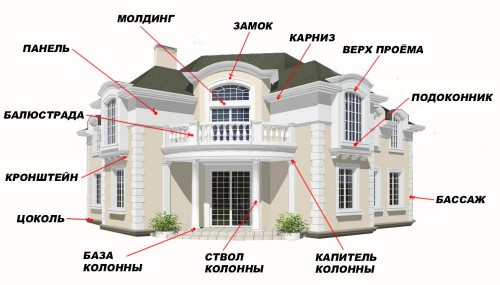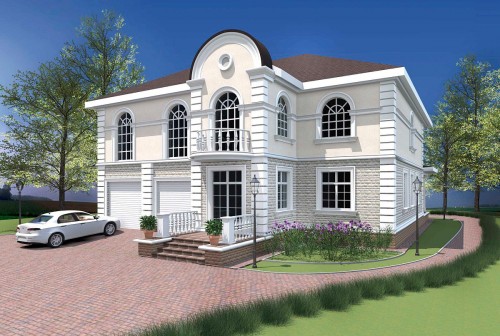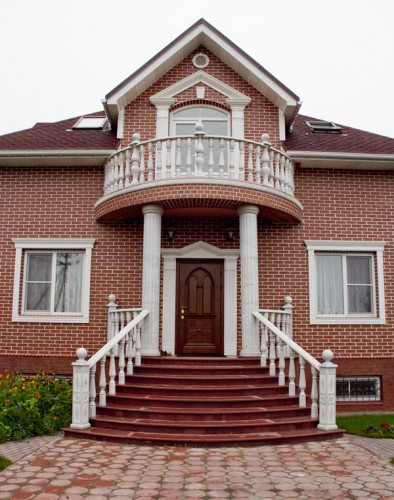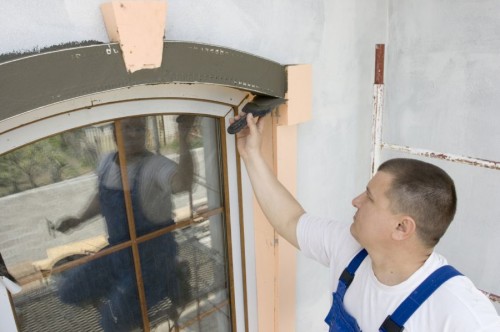The days have long passed when all the buildings were built according to the template, today every new house can be turned into a work of art, and all thanks to the architectural decor. It is performed from different materials: gypsum, polyurethane, foam, it all depends on the preferences of the architect and the owner of the house.
Content
Gypsum decor
In pre -revolutionary times, when the rate of construction accelerated every day, they began to pour the architectural decor from gypsum. It was mainly used inside the building, and outside it was in the form of sculptures. To get good resistance of the material to weather conditions, gypsum elements were impregnated with turpentine, olifa and rosin, and increased protection with sulfate. If the weather conditions were harsh, then concrete was used instead of gypsum, and sawdust and sand were placed in the solution to save in the solution. This decor was very durable and preserved in almost unchanged form to the present day.
And in the Soviet years, the strength of gypsum stucco molding has slightly decreased and, nevertheless, the manufacturing technology was considered the best in the world. Gypsum casting is used now and is very popular.
Pros of gypsum decor:
- high density of the material;
- long life;
- the possibility of restoration;
- great resistance to tectonic shifts;
- you can make very complex shapes;
- possibility of transformation;
- by changing additives, you can achieve the necessary properties.
Cons of gypsum decor:
- complex installation;
- requires special storage before installation;
- long production;
- when drying there is shrinkage, and joints appear;
- sensitivity to moisture;
- light weight.
Despite a significant number of shortcomings, gypsum remains leading technology in the production of complex elements of architectural decor.
Polyurethane decor
Polyurethane has all the properties to become a good material for facade elements.
From the advantages of architectural decor from polyurethane, one can distinguish:
- strength;
- light weight;
- moisture resistance;
- quality surface.
Polyurethane products have not many disadvantages, but they are:
- high price;
- you can buy only ready -made details.
In order to make a unique decor, you will first need to make a press form, and it is expensive. Thus, this technology is suitable for non -artistic construction. But if you invite a talented designer and purchase products of more than one company, but several, then you can create an interesting image of the house.
The leading manufacturer of polyurethane forms is Europlast, whose architectural decor has been used for many years to decorate the interior.
Decor made of polystyrene foam
Foamopolisturol or, as it is also called, foam is a more universal material than polyurethane, since due to the heat cutting of profiles from it you can create various forms. This technology was developed in the mid-90s of Europeans for quick construction. The potential of this material is only revealed, one thing can be said for sure: it is light and using a computer you can quickly cut the necessary shape from raw materials. A layer of a special solution with a reinforcing mesh is rolled on top to give the surface of stiffness and protect from moisture. In the finished form, the facade architectural decor is easily transported to the construction site, installation does not require material and physical costs. It can be carried out at zero temperature, without fear of dampness. And if you use a winter mounting solution, then you can work with stucco molding in frost.
The architectural decor made of foam has several advantages:
- the weight of the material is much lighter than stone or gypsum, so the foam does not give a large load on the foundation and the building of the building;
- long service life - thanks to the protective coating, architectural stucco decor can serve for decades;
- low cost is the cheapest material from which the decor is made. Also much less with its use and costs of installation work.
Disadvantages of architectural decor from foam:
- not suitable for decor with stucco elements, does not give spaciousness for creativity. You can buy only ready -made forms;
- the fragile structure of foam and natural drying can affect the loss of form; If the protective coating is poor -quality, then the product will last no more than two seasons.
Installation of architectural decor
Store products for architectural decor in a warm and dry room. The weather for installation should also be warm and not wet. The installation of architectural decor cannot be carried out on a raw surface. Also, large changes in temperature changes between storage and installation conditions should be avoided. Before starting installation, it is advisable to leave all the decor elements and glue at the installation site for a day.
Instruments required for installation:
- saw with small teeth;
- knock;
- glue gun;
- roulette;
- sandpaper (thin);
- pencil;
- sponge;
- finishing nails;
- anodized screws;
- glue;
- hammer;
- forms for architectural decor.
You can perform installation with your own hand without calling the masters:
- In the place where the decor elements will be installed, it is necessary to remove the remains of the construction solution, pollution, mold. This procedure is performed mechanically, but you can purchase a special solution.
- The base should be even. If there is a deviation at least by a centimeter, then the base is aligned. The plaster must be tapped to determine whether there are voids, after which they are aligned with a solution. If the facade was painted, then the paint that peels is removed.
- Decorative panels to the base are attached with special glue. If the forms are heavy, then they are attached on anchors and embedded details. But glue is used in any case, since it provides the adjacency of the material to the base without gaps.
- On the entire back of the decor element, glue is applied and tightly pressed to the base, hold a few minutes in such a position so that the glue is accommodated with the wall. If you need to additionally strengthen the fasteners with dowels, then you need to drill holes for them only after the glue is completely dry.
- Find holes under the dowel and the junction with a facade sealant.
- After the sealant drying, the decor is painted with an acrylic basis with facade paints.
After installation, the decor made of foam visually is no different from the similar from gypsum and stone.















